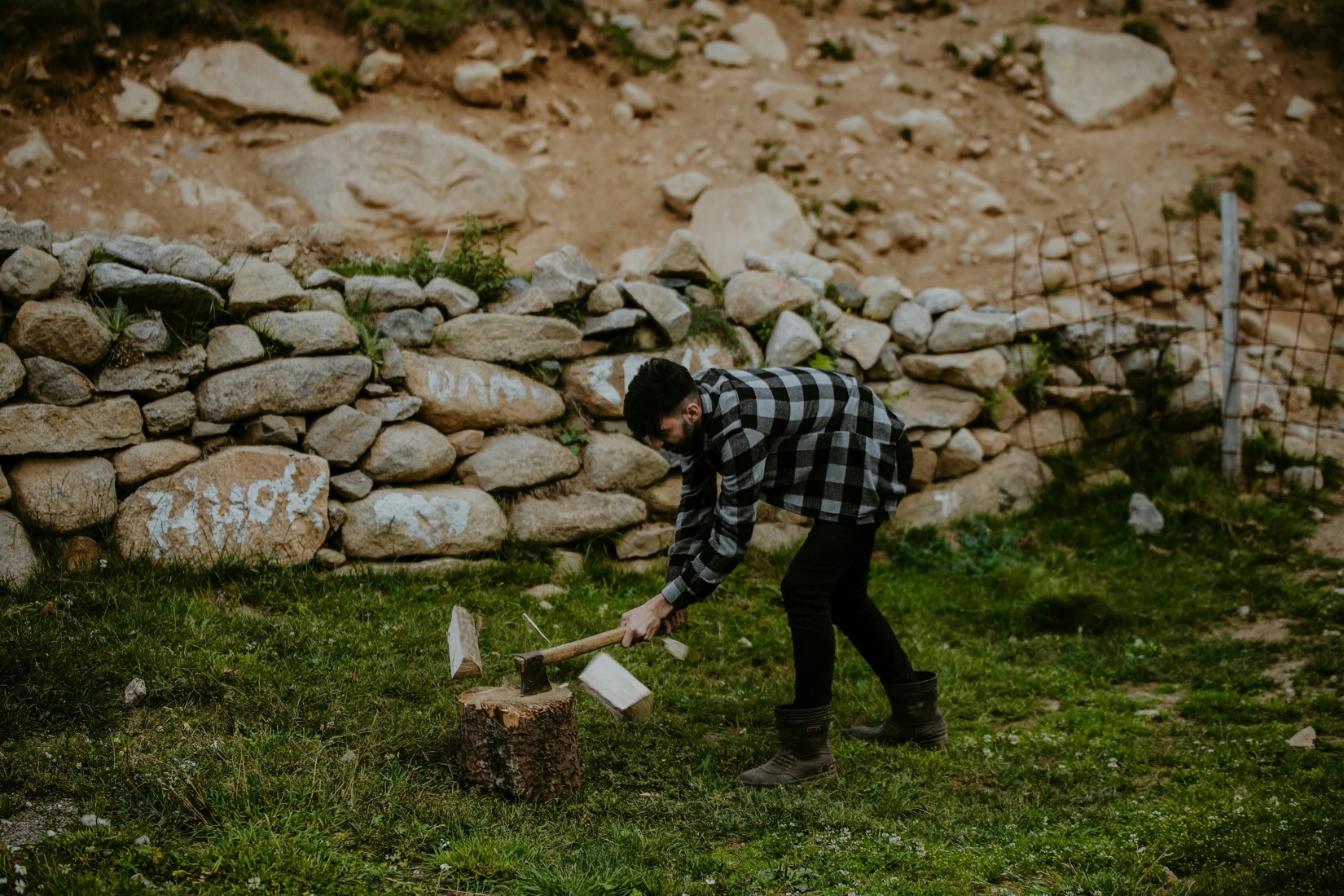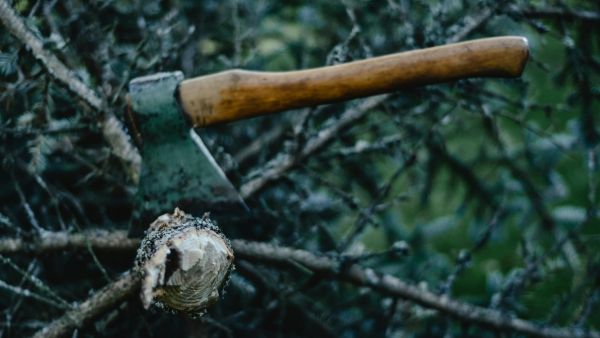Which tool is truly the best for survival? Let's break it down.
The Bushcraft Axe: Power and Versatility
The Bushcraft Axe provides power and versatility for outdoor-specific tasks such as chopping, splitting, and carving. The strong, sharp blade of bush axe allows for effective wood processing, while the ergonomic handle makes for comfortable use. With versatility of bushcraft axes comes their functionality, making it a perfect gift for anyone who enjoys camping, survival, or woodworking.
Pros:
- Can fell trees and split large logs for firewood.
- Effective for shelter-building and crafting tools.
- Multi-use for chopping, carving, and even self-defense.
Cons:
- Heavier and bulkier than a knife or saw.
- Requires more skill to use safely and efficiently.
- Not ideal for precise, detailed cutting tasks.

The Survival Knife: The All-Purpose Option
A survival knife is a multi-functional tool for a variety of tasks in the wilderness. It can be used for cutting, chopping, carving, and self-defense, which makes it an important item for survivalists. Its multi-functionality and durability make it perfect for emergency preparedness and adventure.
Pros:
- Lightweight and easy to carry.
- Ideal for carving, cutting cordage, and food prep.
- Can baton wood in place of a camp axe (with limitations).
Cons:
- Struggles with heavy wood processing.
- Not efficient for cutting large logs or felling trees.
- Edge can dull quickly if used for tasks beyond its design.
The Folding Saw: Precision Cutting with Less Effort
Designed to cut with precision and with little effort, the folding saw can be easily transported and is simple to store. This device accomplishes that with its small, adjustable form factor and strong, long-lasting blade that turns through wood, limbs, and more with very little effort. Perfect for camping, hiking, or anything outdoors, this tool is functional while easy to use, giving you reliable performance when it matters most. Ideal for those needing a multi-tasking portable cutting tool.
Pros:
- Requires less energy to cut wood than a bush craft axe.
- More precise and safer for cutting logs and branches.
- Compact, lightweight, and easy to carry.
Cons:
- Cannot split wood like bushcraft hatchet.
- Less versatile—designed primarily for cutting, not carving or chopping.
- More prone to breakage or malfunction.
Axe vs. Knife vs. Saw: Side-by-Side Comparison
Each has unique strengths depending on the task. It is recommended choosing wood bush axe if you are looking to chop large logs, as they provide the best power and speed. A knife is great for precision work like slicing and carving, but it can't apply the cutting power to larger materials. A saw, with its sharp teeth, is designed for cutting wood and branches at an angle with little force.
|
Tool |
Best Use |
Strengths |
Limitations |
|
Camping axe hatchet |
Chopping large wood |
Powerful, fast cutting |
Bulky, less precision |
|
Knife |
Carving, slicing |
Precise, versatile |
Not for heavy-duty cutting |
|
Saw |
Cutting wood/branches |
Efficient, controlled cuts |
It takes work to pass through thick cuts |
Which Tool Should You Choose?
Choosing the right tool depends on the specific task at hand:
- If you need maximum versatility → Choose a survival knife.
- If you're processing large amounts of wood → Go for bushcraft axes.
- If efficiency and safety are priorities → A folding saw is your best bet.
- For the ultimate survival setup → Carry a knife + saw OR a knife + small hatchet bushcraft.

